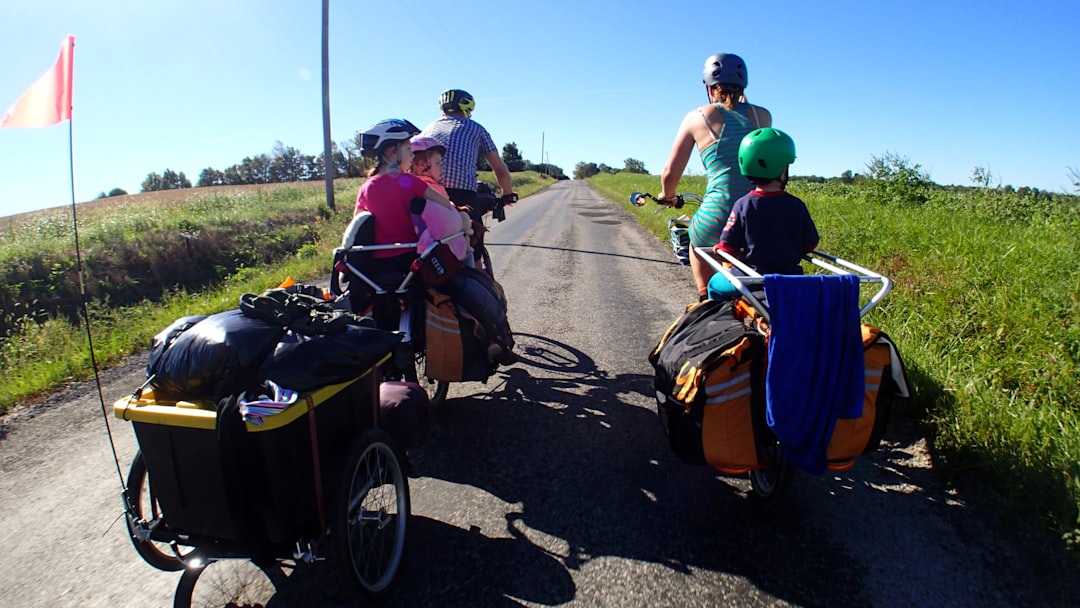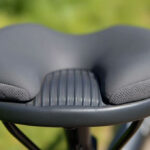Enhancing Urban Mobility with Bicycle Turn Signals
You may be wondering if bicycle turn signals actually make a difference. Short answer: Yes, they do!
Here are key benefits of using bicycle turn signals:
- Increased Safety: They make you more visible to drivers, especially in low-light conditions.
- Better Communication: Clearly signal your intentions to vehicles and pedestrians.
- Improved Urban Cycling: Steer city streets more confidently and safely.
Now, let’s dive deeper into why turn signals are essential for urban cyclists.
In busy cities, where bikes, cars, and pedestrians share the roads, safety is a top concern. Traditional hand signals can sometimes be missed by drivers, especially at night. Modern LED turn signals can solve this, providing a clear and bright indication of your intended direction. This not only helps in preventing accidents but also improves overall road harmony.
Moreover, as urban mobility continues to evolve, promoting the use of bicycle turn signals can make cycling a more viable and safer option for everyone. Whether you are commuting to work, running errands, or exploring new city routes, turn signals can significantly improve your cycling experience.

Bicycle turn signal terms made easy:
– bird electric bikes
– faraday e-bikes
Understanding Bicycle Turn Signals
Types of Bicycle Turn Signals
There are two main types of bicycle turn signals: traditional hand signals and modern LED turn signals. Each has its own advantages and use cases.
Hand Signals:
– Right Turn: Extend your left arm out and bend it upward at a 90-degree angle.
– Left Turn: Simply extend your left arm straight out to the side.
– Stop Signal: Extend your left arm out and bend it downward at a 90-degree angle.
LED Turn Signals:
– These are electronic devices usually mounted on the rear of your bike. They are controlled via a wireless remote on your handlebars.
– Right Turn: Press the right button on the remote to activate the right turn signal light.
– Left Turn: Press the left button on the remote to activate the left turn signal light.
– Some LED systems also include a brake light, which activates when you slow down.
How to Use Bicycle Turn Signals
Using Hand Signals:
1. Right Turn: Before making a right turn, extend your left arm out and bend it upward at a 90-degree angle. This signal is clear and easily visible to drivers behind you.
2. Left Turn: To indicate a left turn, extend your left arm straight out. Make sure to do this well in advance of your turn to give drivers enough time to react.
3. Stop Signal: When you need to stop, extend your left arm out and bend it downward at a 90-degree angle. This helps alert drivers behind you that you are slowing down or stopping.
Using LED Turn Signals:
1. Right Turn: Press the right button on your handlebar remote to activate the right turn signal. The LED light on the rear of your bike will flash, signaling your intention to turn.
2. Left Turn: Press the left button on your handlebar remote to activate the left turn signal. The LED light will flash accordingly.
3. Stop Signal: Some advanced LED systems have a built-in brake light that activates automatically when you slow down, providing an extra layer of safety.
LED turn signals are particularly useful for electric bikes, which often travel at higher speeds. These signals are bright, visible, and reduce the need for hand gestures, allowing you to keep both hands on the handlebars.

Using both hand signals and LED turn signals can greatly improve your visibility and communication with drivers, making your cycling experience safer and more enjoyable.
Benefits of Using Bicycle Turn Signals
Improved Safety
Using bicycle turn signals can significantly improve your safety on the road. Whether you use traditional hand signals or modern LED turn signals, these tools help prevent accidents by making your intentions clear to drivers and other cyclists.
Hand signals are simple yet effective. They communicate your next move, whether you’re turning right, left, or stopping. However, they require one hand off the handlebars, which can be tricky in busy traffic or rough terrain.
LED turn signals, on the other hand, offer a high-tech solution. These signals are usually mounted on the rear of your bike and controlled via a wireless remote on your handlebars. They are bright and visible even in low light conditions, which is crucial for night cycling. Some models even include a brake light that activates when you slow down, adding an extra layer of safety.

Improved Communication with Drivers
Clear communication with drivers is vital for safe urban cycling. Bicycle turn signals—both hand signals and LED turn signals—play a crucial role in this.
Hand signals are universally understood and can be used anywhere. However, they rely on the driver’s attentiveness and the cyclist’s ability to signal without losing control of the bike.
LED turn signals offer a more reliable form of communication. They are highly visible and can be seen from a distance, reducing the chance of misunderstandings. These signals are especially beneficial in busy urban environments where clear communication can prevent accidents.
Incorporating both types of signals into your cycling routine can make your intentions clear to everyone on the road, enhancing your safety and making your ride smoother and more enjoyable.
Using these tools can greatly improve your visibility and interaction with traffic, making urban cycling safer for everyone.
Installing Turn Signals on Your Bike
DIY Installation
Installing LED turn signals on your bike can be a straightforward DIY project with the right tools and a bit of patience. Here’s a step-by-step guide to help you get started:
-
Gather Your Tools: You’ll need a screwdriver, zip ties, and the LED turn signal kit. Most kits come with a remote control, mounting brackets, and USB charging cables.
-
Mount the Rear Light: Attach the rear LED light to your bike’s seat post using the provided brackets. Make sure it’s secure and positioned for maximum visibility.
-
Install the Remote: Mount the remote control on your handlebars. This allows you to easily operate the turn signals without taking your hands off the handlebars.
-
Connect the Wires: If your kit includes wired components, follow the instructions to connect the wires from the rear light to the remote. Use zip ties to keep the wires neat and out of the way.
-
Test the Signals: Once everything is installed, test the turn signals to ensure they’re working correctly. Check both the left and right signals, as well as any additional features like brake lights.
-
Charge the Battery: Before your first ride, fully charge the LED lights using the USB cable. This ensures they’ll be bright and functional.
DIY installation can save you money and give you a sense of accomplishment. However, it’s important to follow the instructions carefully to ensure everything is installed correctly and safely.
Professional Installation
If you’re not comfortable with a DIY approach, professional installation is a great option. Here are some benefits and what to expect:
-
Expertise: Professional bike shops have the expertise to install LED turn signals correctly. They can ensure that the signals are securely mounted and properly wired.
-
Time-Saving: A professional can complete the installation quickly, saving you the time and hassle of doing it yourself.
-
Cost: While professional installation comes with a cost, it can be worth it for the peace of mind. Prices vary, but you can expect to pay around $20-$50 for the service, depending on the complexity of the installation.
-
Warranty: Many bike shops offer warranties on their work. This means if anything goes wrong with the installation, they’ll fix it at no extra cost.
-
Customization: Professionals can also help customize the installation to fit your specific bike and preferences, making sure everything looks and functions perfectly.
Whether you choose to go the DIY route or opt for professional installation, adding bicycle turn signals to your bike can greatly improve your safety and communication on the road.
Frequently Asked Questions about Bicycle Turn Signals
What is the right turn signal for a bike?
A right turn signal can be made using either hand signals or LED turn signals. For hand signals, extend your left arm out and bend it upward at a 90-degree angle. This is a universally recognized signal for a right turn.
If you have LED turn signals installed, simply press the right turn button on your remote control. The LED lights will blink, indicating your intention to turn right to both drivers and pedestrians.
Can you put turn signals on a bike?
Yes, you can definitely put turn signals on a bike! LED turn signals are a popular choice for this. They are easy to install and significantly improve your visibility and safety on the road.
Installation can be a DIY project if you follow the instructions carefully. Kits often include all the necessary components like mounting brackets, a remote control, and USB charging cables. If you prefer, you can also have them professionally installed at a bike shop.
Why don’t bicycles have turn signals by default?
Bicycles traditionally haven’t come with turn signals for a few reasons:
-
Bike Size: Bicycles are smaller and simpler machines compared to cars. Adding turn signals would increase the complexity and cost of the bike.
-
Traditional Practices: For a long time, hand signals have been the standard for indicating turns and stops. They are easy to learn and don’t require any additional equipment.
-
Safety: Modern LED turn signals are a relatively new addition to biking. As technology advances, more cyclists are adopting these for added safety. However, the cost and the need for regular charging can be barriers to widespread adoption.
By understanding these factors, you can see why turn signals are not yet a default feature on bicycles, but their benefits are leading more cyclists to consider adding them.
Conclusion
At Doot Scoot, we believe in making urban mobility safer and more eco-friendly. Bicycle turn signals play a crucial role in achieving this.
Urban mobility is evolving, and bicycles are becoming a key part of sustainable transportation. Turn signals improve safety by making cyclists more visible and predictable on the road. This helps prevent accidents and improves communication with drivers.
Eco-friendly transportation is at the heart of what we do. By promoting the use of bicycles equipped with safety features like turn signals, we are contributing to a greener and healthier environment.
Safety is paramount. Whether you’re a seasoned cyclist or a newcomer, adding LED turn signals to your bike can make your rides safer. They are easy to install and use, making them a valuable addition to any bicycle.
For more tips and guides on improving your cycling experience, visit Doot Scoot. Let’s ride towards a safer and greener future together!










